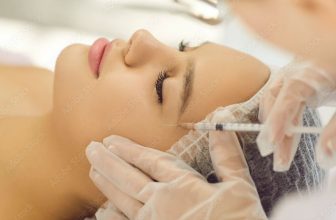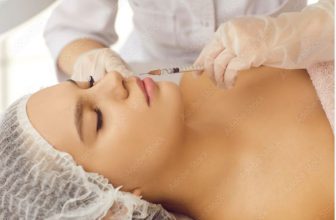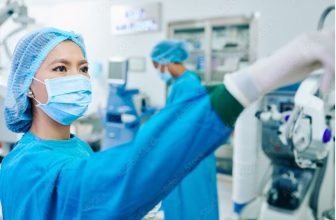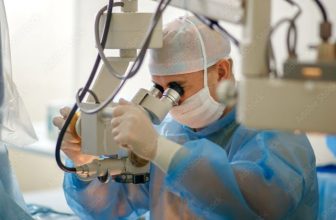
Medical Assistant Vs Licensed Practical Nurse
Discover the differences between a medical assistant and a licensed practical nurse. Gain insights into their roles, responsibilities, and education requirements. Get the information you need to make an informed decision about pursuing a career in healthcare.
What is a Licensed Practical Nurse?
A licensed practical nurse (LPN), also known as a licensed vocational nurse (LVN), is a healthcare professional who plays a crucial role in nursing. LPNs provide direct patient care under the supervision of registered nurses or physicians. They are responsible for monitoring patients’ vital signs, administering medications, and assisting with various medical procedures. LPNs also collaborate with the healthcare team to develop and implement patient care plans.
What is a Medical Assistant?
A medical assistant is a vital healthcare team member who provides administrative and clinical support to healthcare professionals, such as doctors and nurses. They play a crucial role in ensuring the smooth functioning of medical facilities, including hospitals, clinics, and doctor’s offices. Medical assistants perform various administrative tasks, such as scheduling appointments, managing patient records, and handling insurance forms.
Medical Assistant Vs Licensed Practical Nurse
In the dynamic world of healthcare, it’s essential to clearly understand medical professionals’ different roles and responsibilities. Two common positions that often confuse are medical assistants (MAs) and licensed practical nurses (LPNs). While these roles may seem similar at first glance, they differ in education, scope of practice, and job responsibilities. In this informative blog post, we will delve into the details of these two professions to help you better understand their unique contributions to the healthcare field.

Education and Training:
Medical Assistants:
Medical assistants typically complete a post-secondary certificate or diploma program, which usually takes around one year. These programs cover various subjects, including medical terminology, anatomy, physiology, pharmacology, clinical procedures, and administrative tasks. Some medical assistants may also pursue an associate degree program. Upon their education, MAs may become certified by passing a national examination.
Licensed Practical Nurses:
Licensed practical nurses, on the other hand, must complete a state-approved practical nursing program, which usually takes around one year. LPN programs provide comprehensive education and training in nursing fundamentals, patient care, pharmacology, anatomy, physiology, and other related subjects.
Scope of Practice:
Medical Assistants:
Medical assistants play a vital role in both clinical and administrative settings. Their duties may include:
- Taking patient histories.
- Measuring vital signs.
- Administering medications (under the supervision of a physician).
- Preparing patients for examinations.
- Assisting with procedures.
- Performing basic laboratory tests.
- Managing medical records.
MAs often work in outpatient clinics, hospitals, and physician offices, providing valuable support to healthcare providers.
Licensed Practical Nurses:
Licensed practical nurses provide direct patient care under the supervision of registered nurses or physicians. Their scope of practice includes:
- Administering medications.
- Monitoring patients’ health conditions.
- Dressing wounds.
- Collecting samples for laboratory testing.
- Inserting catheters.
- Providing basic patient education.
- Documenting patient information.
LPNs work in various healthcare settings, such as hospitals, nursing homes, clinics, and home healthcare.
Job Responsibilities:
Medical Assistants:
Medical assistants are versatile professionals trained to handle administrative and clinical tasks. In the administrative realm, they schedule appointments, manage patient records, handle billing and coding, and medical assist with insurance claims. On the clinical side, MAs assist physicians during examinations and procedures, prepare and administer medications, draw blood for laboratory tests, and provide patient education. Their ability to multitask and adapt to various situations makes them valuable healthcare team members.
Licensed Practical Nurses:
Licensed practical nurses primarily focus on providing direct patient care. They assess patients’ health conditions, administer medications, monitor vital signs, change dressings, assist with activities of daily living, and provide emotional support to patients and their families. LPNs collaborate with registered nurses and other healthcare professionals to develop and implement patient care plans. Their expertise and knowledge enable them to deliver compassionate care to patients across different healthcare settings.
Job Outlook:
Medical Assistant:
The job outlook for medical assistants is expected to increase by 16% from 2021 to 2031, resulting in around 117,800 more MAs during that period, as stated by the BLS.
Licensed Practical Nurse:
The BLS projects a 6 percent growth in employment for licensed practical nurses from 2021 to 2031, which equates to the need for an estimated additional 41,300 LPNs nationwide during that time period.
Salary:
Medical Assistant:
The BLS reports medical assistants made a 2021 median annual wage of $37,190.
Licensed Practical:
As for salaries, the BLS reports that the median annual pay in 2021 for LPNs was $48,070, which is higher than the national average of $45,760.
Conclusion
In summary, while medical assistants and licensed practical nurses play important roles in healthcare settings, there are significant differences in their education, scope of practice, and responsibilities. Medical assistants typically have a shorter educational path and primarily support administrative and clinical healthcare professionals. LPNs, on the other hand, require more extensive education and training, and their scope of practice encompasses a wider range of patient care responsibilities.
FAQ’s
What is a medical assistant?
A medical assistant is a healthcare professional who performs administrative and clinical tasks to support the work of physicians and other healthcare providers.
What is a licensed practical nurse?
A licensed practical nurse (LPN) is a healthcare professional who provides basic nursing care under the supervision of registered nurses (RNs) and physicians.
Can medical assistants become licensed practical nurses?
Yes, medical assistants can pursue further education and training to become licensed practical nurses if they choose to do so. However, they would need to complete a practical nursing program and meet the requirements for licensure in their state.
Can licensed practical nurses work as medical assistants?
Licensed practical nurses can work in medical assistant roles if preferred, as they have the necessary clinical skills and knowledge. However, the scope of their practice may exceed the responsibilities typically assigned to medical assistants.
Are medical assistants and LPNs in high demand?
Medical assistants and LPNs are currently in high demand due to the expansion of the healthcare industry and the rising healthcare requirements.
What are the career prospects for medical assistants and licensed practical nurses?
Both medical assistants and licensed practical nurses have positive career prospects. The healthcare industry continues to grow, and there is a high demand for skilled professionals in both roles. Additionally, both positions can serve as stepping stones for further career advancement in healthcare.







